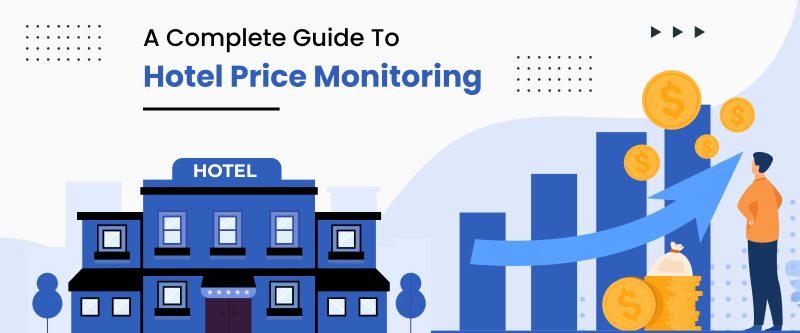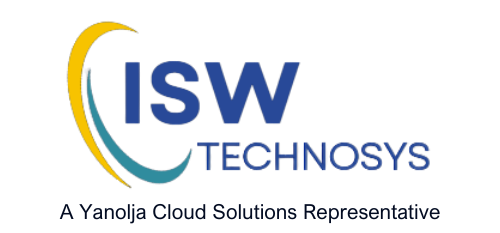The Comprehensive Handbook on Hotel Price Monitoring Strategies

In today’s dynamic hospitality industry, hotel prices fluctuate constantly, due to seasonality, demand changes, and competitor pricing strategies. For both budget-conscious travelers and savvy hoteliers, staying updated on these pricing dynamics and hotel price monitoring is crucial.
So, let’s start with the basics and delve into–
Table of Content
- Why Hotel Price Monitoring Matters
- Understanding Hotel Price Dynamics
- Best Practices for Effective Hotel Price Monitoring
- Challenges and Limitations
- Future Trends in Hotel Price Monitoring
- The Best Hotel Price Monitoring Software: eZee Mint
Why Hotel Price Monitoring Matters?
Hoteliers and revenue managers rely on effective hotel price monitoring to optimize revenue and maximize profitability. By understanding market trends, demand patterns, and competitor pricing strategies, hoteliers can adjust their pricing strategies in real time to attract more guests and maintain a competitive edge in the industry.
On the flip side, for travelers, monitoring hotel prices can mean the difference between an affordable vacation and blowing the budget.
By staying informed about price fluctuations, travelers can seize opportunities to book accommodations at the most competitive rates.
Understanding Hotel Price Dynamics
Hotel price dynamics are essential for hoteliers to effectively manage their revenue strategies. It is constantly changing as what worked for you yesterday can or cannot work tomorrow!
Numerous factors influence pricing decisions, requiring constant monitoring and adaptation to maximize revenue and stay competitive in the market.
Factors Influencing Hotel Pricing
Some of the most crucial factors influencing hotel price dynamics are as follows—
- Seasonality and Demand: Hotel prices often vary based on seasonal demand, with peak seasons commanding higher rates due to increased tourist activity. Conversely, off-peak periods may see lower prices to attract guests during slower times.
- Location and Proximity to Attractions/Events: The geographical location of a hotel and its proximity to popular attractions, business centers, or events significantly impact pricing.
- Competitor Pricing Strategies: It is important for hoteliers to closely monitor competitors’ pricing strategies to stay ahead in the business. Adjustments in pricing are often made in response to competitors’ rates to attract guests while maintaining profitability.
- Special Offers and Promotions: Properties frequently offer special promotions, discounts, or package deals to entice guests and fill rooms during specific periods or to promote new amenities or services.
Understanding and effectively navigating these factors is essential for hoteliers to strategically price their rooms, maximize revenue, and maintain competitiveness in the hospitality industry.
The Importance of Real-Time Data in Pricing Decisions
By accessing real-time data, hoteliers can make informed pricing decisions promptly, optimizing room rates to match current market conditions and maximize revenue potential.
Without real-time data, hotels often miss revenue opportunities, struggle with pricing inaccuracies, and lose competitiveness in a fast-paced industry.
Therefore, leveraging real-time data is essential for hotels to stay agile, responsive, and profitable in today’s dynamic hospitality market.
Tools and Techniques for Hotel Price Monitoring
Hotel price monitoring involves various tools and techniques to help hoteliers stay competitive. Let’s check them out—
- Comparison Websites and Search Engines: Popular search engines like Trivago, Kayak, and Google Hotel Search offer hoteliers valuable insights into market trends and competitor pricing.
- Travel Meta-Search Engines: Another tool for price monitoring is travel meta-search engines. Tools like Skyscanner and Momondo aggregate hotel prices from various sources, including online travel agencies and hotel websites.
- Specialized Hotel Price Monitoring Software: Today there are countless software available in the market, such as eZee Mint, which provides advanced features and functionalities tailored specifically for hotel revenue management. These tools offer comprehensive insights into market demand, competitor pricing strategies, and guest booking patterns, empowering hoteliers to optimize room rates and maximize revenue effectively.
By utilizing these tools and platforms, hoteliers can gain valuable insights into pricing trends, competitor strategies, and market dynamics, enabling them to make informed pricing decisions and stay competitive.
Best Practices for Effective Hotel Price Monitoring
Let’s understand the strategies that you must follow to get nothing but the best prices for your inventory.
- Set Clear Objectives and Criteria for Monitoring:
Before embarking on your hotel price monitoring journey, you need to establish clear objectives and criteria. Whether it’s maximizing revenue, maintaining competitiveness, or optimizing occupancy rates, defining specific goals will guide you in the process and ensure focus on relevant metrics.
- Choose The Right Combination of Tools and Methods:
Selecting the appropriate tools and methods is crucial for effective hotel price monitoring. Consider factors such as budget, the complexity of data analysis required, and the specific needs of your property. Combining manual tracking methods with automated solutions, for example, can provide a comprehensive view of pricing trends.
- Establish A Regular Monitoring Schedule:
Consistency is key in hotel price monitoring. Establishing a regular monitoring schedule ensures that pricing data is continuously tracked and analyzed, allowing hoteliers to identify trends, anomalies, and opportunities promptly. Whether it’s daily, weekly, or monthly monitoring, consistency is essential for accurate insights.
- Analyze and Interpret The Data Effectively:
Simply gathering data is not enough; you must also analyze and interpret it effectively to derive actionable insights. Utilize data visualization tools, such as charts and graphs, to identify patterns and trends. Look beyond surface-level metrics.
- Implement Strategies for Price Optimization and Competitive Advantage:
Finally, hotel price monitoring should not exist in isolation; it should involve strategic decision-making. Use the insights gleaned from monitoring to implement pricing strategies that optimize revenue and maintain a competitive edge. This might include adjusting room rates based on demand fluctuations, offering targeted promotions, or adjusting distribution channels.
By adhering to these best practices, hoteliers can ensure that their price monitoring efforts are effective, leading to better decision-making, increased revenue, and sustained competitiveness.
Challenges and Limitations
Just like every other strategy, hotel price monitoring has its own set of challenges and limitations.
a. Data Accuracy and Reliability Issues:
One of the primary challenges in hotel price monitoring is ensuring the accuracy and reliability of the data collected. Factors such as outdated information, discrepancies between different sources, and incomplete data sets can impact the reliability of pricing insights. Hoteliers must exercise caution and implement validation measures to mitigate these challenges and ensure the accuracy of their pricing decisions.
b. Legal and Ethical Considerations of Web Scraping:
Web scraping, while a valuable tool for gathering pricing data from online sources, raises legal and ethical considerations. Hoteliers must navigate potential issues such as data privacy laws, terms of service violations, and intellectual property rights infringements when scraping data from third-party websites.
c. Over-Reliance on Automated Solutions:
While automated solutions can streamline the hotel price monitoring process and provide valuable insights, there is a risk of over-reliance on technology. Depending solely on automated solutions without human oversight can lead to errors, oversights, and misinterpretation of data. Hoteliers must strike a balance between automation and human judgment.
d. Continuous Monitoring and Adaptation to Changes:
Hotel pricing dynamics are constantly evolving, influenced by factors such as market trends, competitor strategies, and external events. As such, hoteliers face the challenge of continuous monitoring and adaptation to changes in the market landscape. Failure to stay updated on pricing trends and adjust strategies accordingly can result in missed revenue opportunities.
By overcoming these challenges, hoteliers can enhance the effectiveness of their price monitoring efforts and make more informed pricing decisions to drive revenue and maintain competitiveness in the market.
Future Trends in Hotel Price Monitoring
The future of hotel price monitoring is shaped by technological advancements and evolving consumer preferences. Integration of AI and machine learning facilitates predictive pricing models, enabling hoteliers to anticipate demand fluctuations and optimize room rates dynamically.
Personalization is becoming increasingly important, with hotels leveraging guest data to offer targeted pricing strategies, enhancing customer loyalty and satisfaction. Blockchain technology is emerging as a solution for transparent pricing transactions, fostering trust between hotels and guests.
Furthermore, enhanced collaboration between hotels and online travel agencies (OTAs) is facilitating more effective distribution and pricing strategies, maximizing revenue opportunities and improving the guest booking experience.
These trends signify a shift towards data-driven, personalized pricing approaches that prioritize transparency, collaboration, and guest satisfaction in the hospitality industry.
The Best Hotel Price Monitoring Software: eZee Mint
Hotel price monitoring can be a hectic and time-consuming process, especially with the multitude of tools and techniques available in the market. It’s normal to feel overwhelmed or confused amidst the plethora of options. However, during my research for this blog, I came across a handful of tools that can make the process a breeze, and one such software is eZee Mint.
eZee Mint is a revenue management software that offers a comprehensive solution for hotels to streamline the pricing process and provide valuable insights. With advanced features such as real-time data analysis, predictive pricing models, and customizable reporting tools, it empowers hoteliers to make informed pricing decisions and optimize revenue effectively.
What sets Mint apart is its user-friendly interface, making it easy for hoteliers to navigate and utilize its powerful features with minimal training. Additionally, the reliable support provided ensures that hoteliers have assistance whenever needed, ensuring a smooth experience while using the software.
Whether managing a single property or a chain of hotels, it caters to varying business needs. With flexible pricing plans and a scalable infrastructure, the software grows with your business, providing continued value and support as you expand.
Conclusion
Hotel price monitoring is one of the most important aspects of your property’s revenue management that often gets overlooked. It can be towering at times, but with the right set of tools, you will reap the benefits.
Without further ado, start hotel price monitoring today, and let me know if you have any questions or doubts; I will be happy to assist!
Happy Hoteliering. 😀
For more articles, Blog – ISW Technosys Ltd

